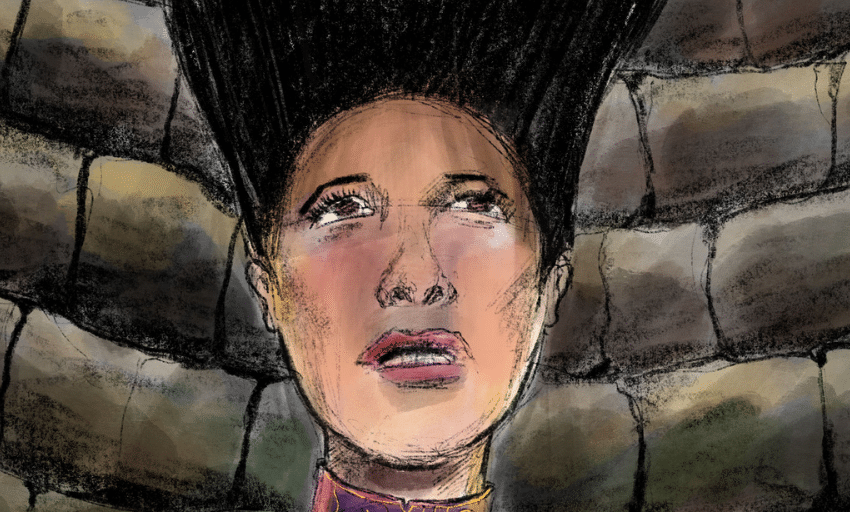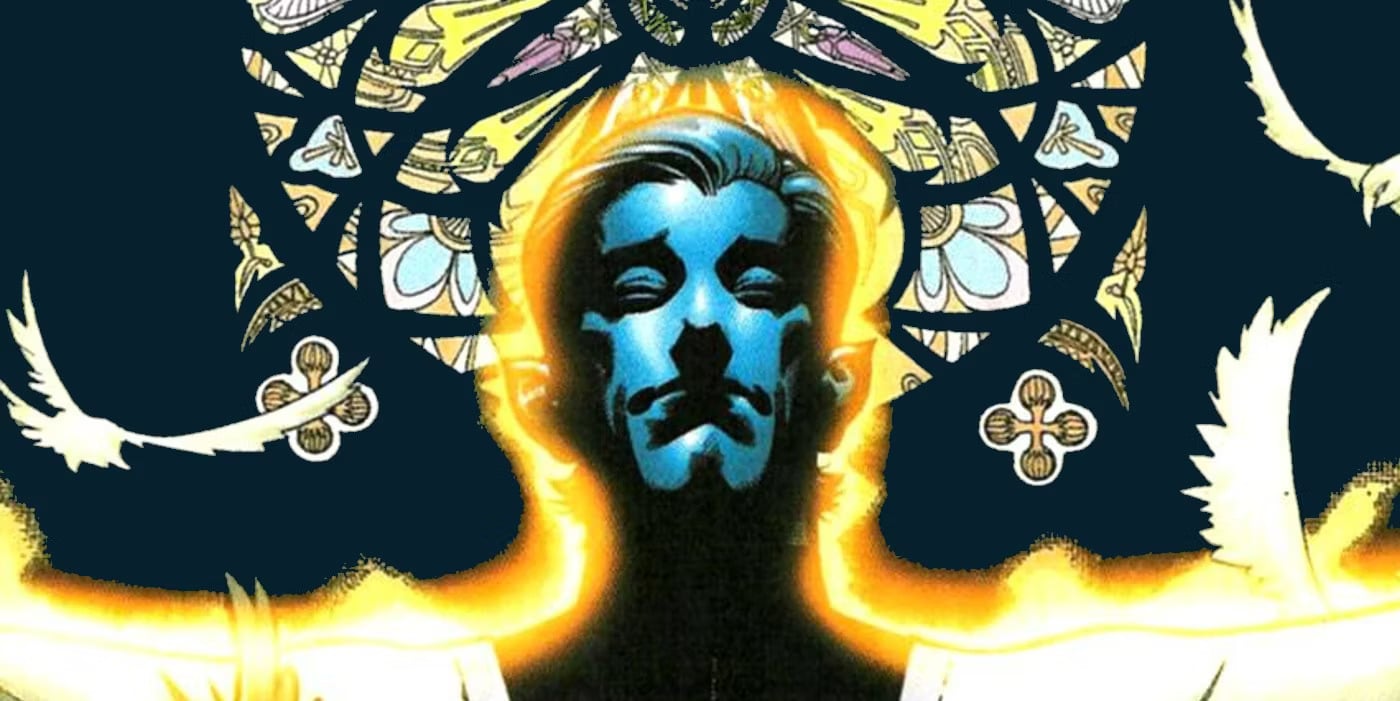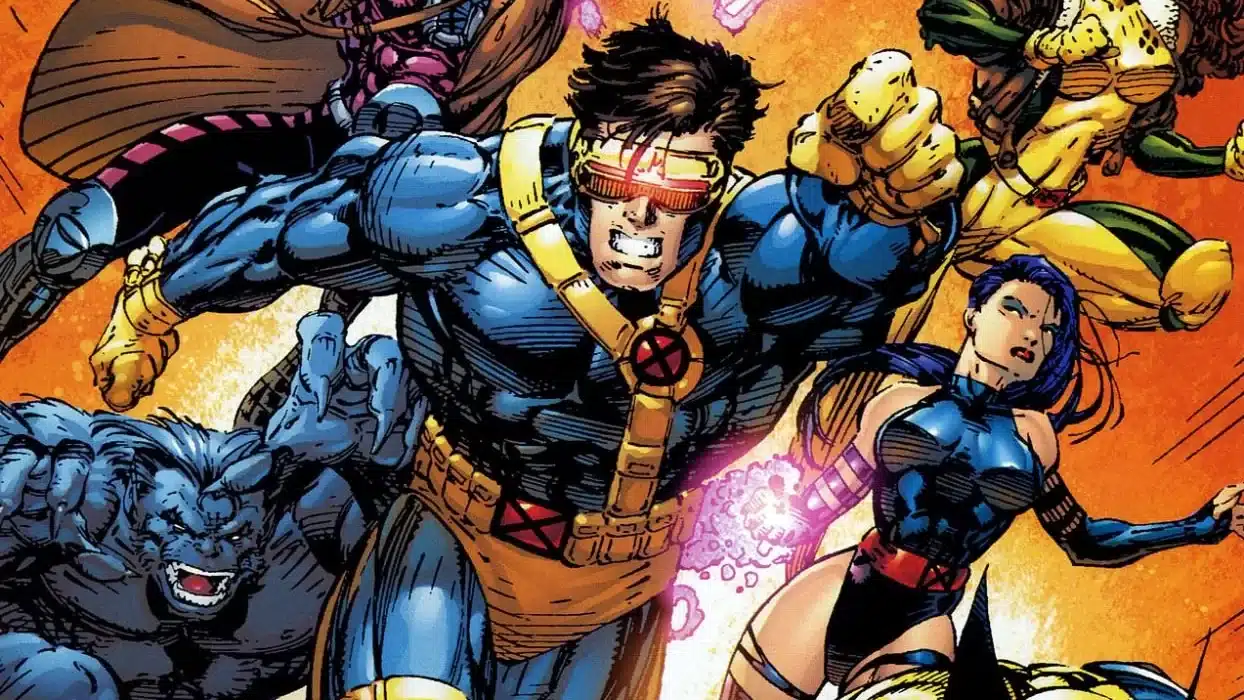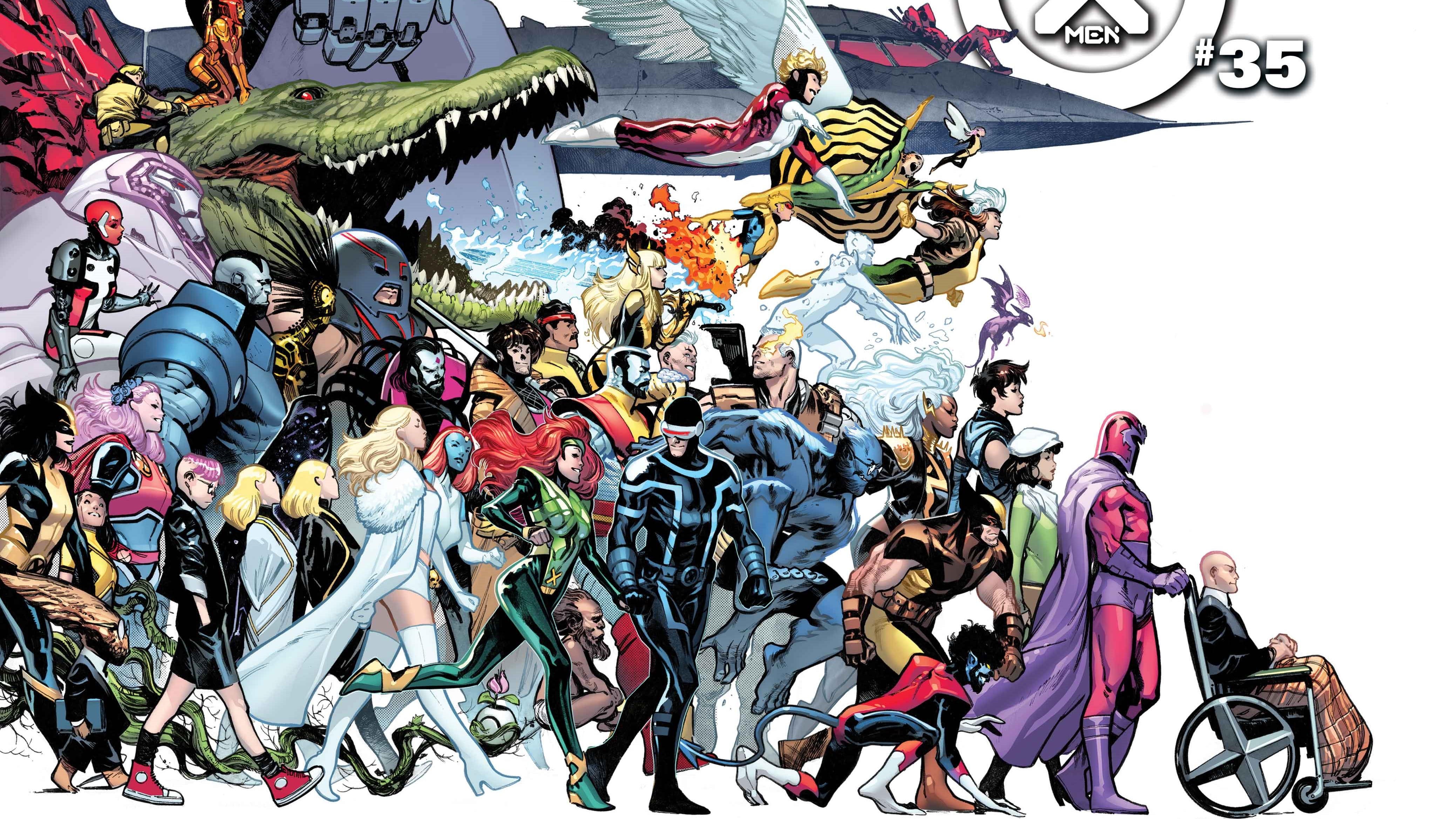UPDATE: On Thursday, publisher Artists, Writers & Artisans released a statement saying it supported its artists if they chose to make NFTs featuring AWA IP and had established a program to support those efforts. The statement included quotes of support from artists Mike Choi, Kaare Andrews, Jonboy Meyers and, most notably, Mike Deodato Jr., who last month criticized DC for issuing a letter warning artists against making NFTs using DC IP.
“AWA’s policy about NFT and creators is one to be followed by the whole industry. They have been an example since day one on how to treat creators with the respect they deserve and couldn’t continue to do so with this new opportunity for artists,” Deodato said in the AWA statement.
THE ORIGINAL STORY FOLLOWS BELOW
For a hot second, NFTs, or non-fungible tokens, were something I thought I could ignore. I didn’t understand how cryptocurrency works, so there was no way I was going to be able to wrap my brain around cryptoart.
I tried reading a Rolling Stone article about how Kings of Leon were releasing their latest album as an NFT. I tapped out at the second paragraph, when the phrase “blockchain technology” was introduced. I thought that was just a thing you used to keep ComicsGate people out of your Twitter timeline (as opposed to a type of database).
My younger, smarter, more plugged-in friends said NFTs were bad, that the energy required to do the blockchain processing that makes them unique could hasten man-made climate change.
I kept that in mind as I began to see the discourse forming around cryptoart, as creators and fans began to take sides in yet another discourse war I thought I could ignore because it was all sound and fury signifying nothing, like writers vs. artists or subs vs. dubs.
Then I got a news release saying Matt Kindt was releasing a comic as an NFT, and I said to myself: “Crap. I guess I have to care now.”
While any old jpg or gif can be copied and shared ad infinitum across the internet, an NFT exists on a blockchain in such a way that it is allegedly unique. So, much like you could (pre-2020) go to a convention and get a sketch from Erica Henderson of Shatterstar floating in a bowl of cereal, you could bid at auction for a digital sketch or comic that would not be replicated for mass distribution.
Except the digital image is not the NFT.
According to research compiled by the Comic Book Legal Defense Fund, “The NFT refers to its associated objects through hyperlinks or hashes, and in many if not most instances involving digital art, these links or hashes refer to files on the server of the platform where it is sold.”
So, it’s not so much the image as it is a certificate saying, “Congratulations, you own one (1) image. Sort of.”
“The basic premise of an NFT is incredibly flawed,” said ComicsXF’s own Adam Reck, who makes digital art on a regular basis and has come down firmly on the anti- side of the NFT equation. “You aren’t paying for artwork. You are paying for a little sign that points to where to look at the artwork. And when the hosting site of that artwork goes belly up, the NFT is literally pointing at nothing.”
So what, in fact, do you own? Well, if you’re Kindt, you make that mystery part of the subject of your NFT comic.

The writer/artist auctioned off a new installment of his creator-owned MIND MGMT series exclusively as an NFT. The winning bid, by user goldbera, was $5,182.83, or 2.68 WETH, short for wrapped Ethereum, a unit of cryptocurrency.
“I wanted to create an original MIND MGMT comic book narrative that would explore the nature of belief and the value of ideas and their intangible nature as a way of exploring the idea of NFTs,” said Kindt in the news release announcing the auction. “The best way to explore this idea was for the actual story — the MIND MGMT narrative — to become what it is about. This story is written as a MIND MGMT espionage narrative — an agent sent on a mission to retrieve a priceless artifact. There are secret codes, monk-ninjas. LOTS of monk-ninjas and a teenage immortal intent on stealing this priceless artifact. It is both a real apple … and a drawing of an apple.”
The winner of the auction reserves the right to share the comic how they please, be it posting it online somewhere, sharing it among friends and loved ones or keeping it all to themselves like Martin Shkreli with that Wu-Tang Clan album.
Kindt wraps his pitch by saying, “a percentage of the proceeds is going directly to an environmental agency to offset the impact that generating an NFT has on the environment.” That agency is the Missouri Coalition for the Environment, based in Kindt’s home state.
According to one report, the crypto mining that goes into your average NFT consumes roughly the same amount of electricity as a person living in the European Union for a month.
There does appear to be a movement toward a less energy-consumptive crypto market. Ethereum, the currency by which most NFTs are traded, is working on a 2.0 version that claims to consume less energy, but even Ethereum mining pales in comparison to the carbon emitted in the process of mining Bitcoin, Ethereum’s more well-known cousin.
But that’s a rabbit hole for another website. In the meantime, we find artists and other creatives coming down on either side of NFTs like so many Iron Men and Captains America.
Not all the arguments are about the environment.
DC went out of its way to warn its creators against using the publisher’s IP in NFTs, writing in a March 11 letter that it is “exploring opportunities to enter the market for the distribution and sale of original DC digital art with NFTs.” Ironically, said letter was turned into an NFT.
Comic artist Mike Deodato railed against DC’s move in a letter posted March 27 on Bleeding Cool. Deodato’s argument: Comic artists make money selling their original art. In an age where most artists are working digitally, and in our current period where conventions aren’t happening, there is no physical original art to sell. NFTs allow artists to make up that lost revenue. But DC cracking down on NFT art of its IP is just one more attempt by the industry to keep artists from making a living wage while it profits off their work.
“So, let me get this straight,” Deodato writes. “If you are a traditional comic book artist you can sell your original art on paper. If you are a digital comic book artist you are not allowed to sell your digital original art.”
According to the CBLDF: Yeah, that’s right:
“The copyright implications of digital original art are somewhat different from those of paper originals. The artist of a paper original of a page produced as work for hire will typically own the physical copy but not the copyright; the artist can sell the paper original typically without risk of a copyright claim. With digital originals and commissions, however, selling the digital work raises several IP issues.
“What makes digital original art distinct from physical original art on paper is that each expression of the code in visual form is arguably a reproduction or copy. Assuming this is the case, that would make the sale of digital art without a license a violation of the IP owner’s copyright. The same would apply to signed printouts of the digital original art, even if the number of copies are limited. This is the legal justification for demand letters to NFT platforms calling for the removal not just of digital art by third parties but original digital art by creators who work or have worked with the IP owner.”

Omar Spahi preceded Kindt in entering a comic into the NFT market. An issue of his creator-owned series, Xenoglyphs, is up for auction on Rarible for, as of Monday night, $6,271.40, or 2.95 WETH.
Spahi, who also co-wrote Image’s recent series Getting It Together with Sina Grace, said he doesn’t make much money as an independent comics creator, so NFT art is an avenue to get a little back and connect with fans.
“NFTs allow for artists to be supported in a meaningful way,” he said.
Of course, understanding how it all works can be a bit of a barrier to entry, not to mention setting up an account, “gas fees” — the payments made by users to compensate for the computing energy required to process and validate transactions on the Ethereum blockchain, which, wow, that name’s not doing anything to assuage those with environmental concerns — and spreading the word that you have an NFT out there at a time when the average person doesn’t know what that is. Though, as Spahi points out, that’s not that different from getting people to pay attention to your Kickstarter.
As for the environmental effect, “I don’t understand why there’s been backlash in the comics community over the power usage,” Spahi said. “Why is it only in the comics community or the NFT aspects when each crypto transaction is using that much power?”
That appears to be a common argument in the NFT community, a spin on “Don’t hate the player, hate the game.”
The management of the NFT art site SuperRare wrote a piece for Medium placing blame squarely on the mining process for Ethereum, the cryptocurrency that makes NFT possible, claiming it is structured such that, NFTs or no, it would still be consuming the same amount of too much energy.
Another key tactic on the pro-NFT side: Here, go read this article and leave me alone. At the end of Deodato’s letter, in a brief nod to the environmental argument, he links to a Forbes article about Bitcoin mining that doesn’t mention NFTs at all and then says “and then please go discuss it someplace else.”
To be fair, nobody owes anyone a debate, but if you’re trying to win hearts and minds, it’s probably not the best strategy to yell “Go fetch,” throw a stick and then run inside the house and lock the door.
And to be clear, Deodato makes at least one fair point. There is a cruelty in AT&T’s comics division cracking down on sales of a form of original art during a time when another avenue to selling original art — conventions — has been largely pulled off the table by the coronavirus.
Further making them attractive, the contracts behind NFTs can include terms such as giving their creators royalties on resale or automatically funding carbon offsets.
But again, isn’t that just feigning nobility by offering to clean up the mess you made, like when you trash a friend’s house when their parents are away and then offer to stay past dawn and glue back together the vase you broke while attempting a keg stand?
Ultimately, what we appear to have is a devil’s bargain. The NFT market, in its current form, offers comic artists a financial boon in a career that too often ends in a pauper’s grave, or at the very least necessitates GoFundMe campaigns to cover medical expenses and applications for charity from the Hero Initiative. All you have to do is pay the gas fees and become part of a cycle whose carbon footprint is still being calculated and every article I’ve read about it says some variation of “Don’t worry, they’re working on it.”
Even putting that aside, this all could be just another bubble, an overblown fad market on par with the comics speculator boom of the early 1990s or the real estate debt market of the mid-2000s. Bloomberg reported on Friday that average prices for NFTs have fallen 70% from a peak of $1,400 in February.
Either way, we’re online looking for things to collect because we’re stuck at home with too much free time, and those of us fortunate enough to have disposable income are looking for things to fritter it away on.
How long will that last? Will the clarion call of conventions later this year (maybe?) distract us with promises of dollar-bin diving and signed photos of original Green Power Ranger Jason David Frank? What becomes of your NFT picture of that DC warning then?
And in the meantime, if you are concerned about the environmental effects of NFTs, what’s the alternative? How can you satisfy your craving for scarcity without engaging in dubious environmental politics?
“The reality is, if you want to own a piece of exclusive digital artwork, you can do so by commissioning a digital artist and not share the work. It’s that easy,” Reck said. “There are so many ways we’re already destroying the environment, why are we inventing new ones in the name of owning literally nothing?”
Dan Grote is the editor-in-chief of ComicsXF, having won the site by ritual combat. By day, he’s a newspaper editor, and by night, he’s … also an editor. He co-hosts WMQ&A: The ComicsXF Interview Podcast with Matt Lazorwitz. He lives in New Jersey with his wife, two kids and two miniature dachshunds, and his third, fictional son, Peter Winston Wisdom.






